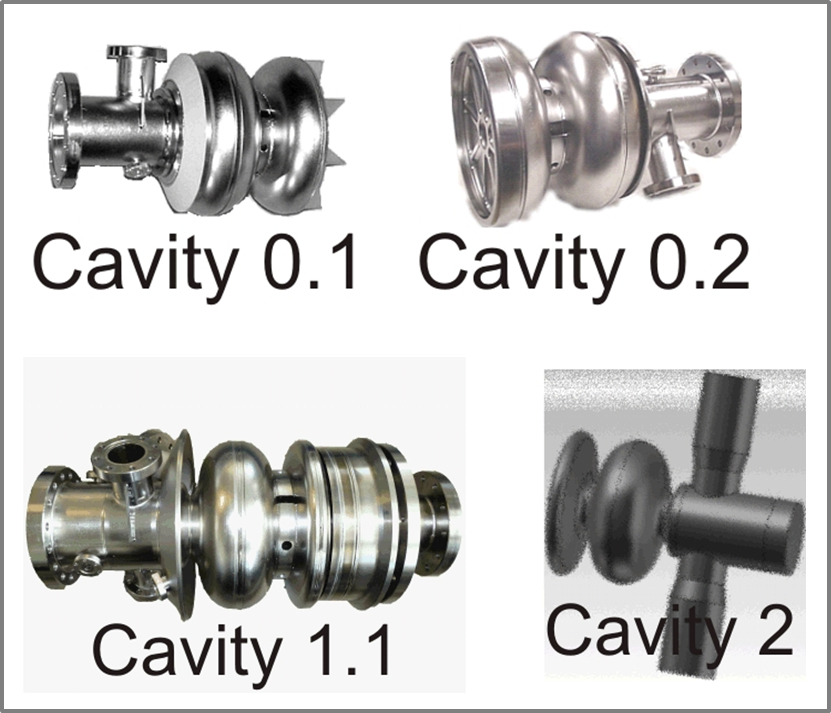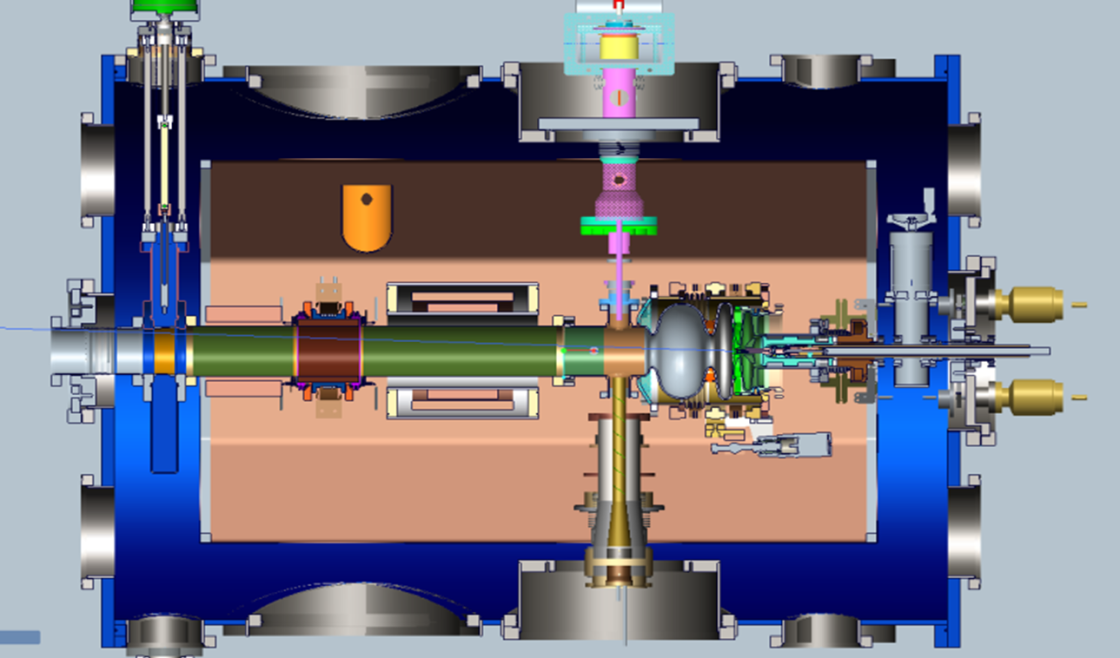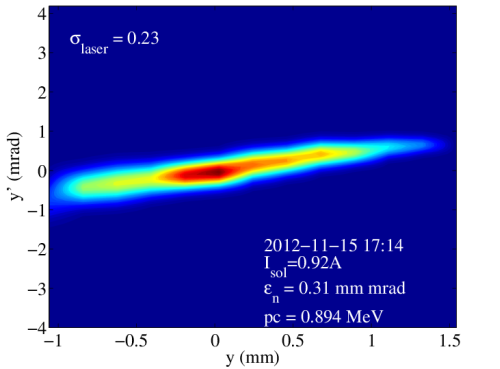bERLinPro
Gun Cavity & Module Development / GunLab & Photocathode Development
Reference Publications:
for Gun0 results: A. Neumann et al.: First Characterization of a Fully Superconducting RF Photoinjector Cavity, IPAC 2011
for Gun1 details: A. Neumann et al.: Towards a 100 mA superconducting RF photoinjector for BERLinPro, Proc. of SRF2013 (to be published)
Gun Module Development
While the two Gun 0.X cavities were installed in HoBiCat, Gun 1.1 is the first cavity with an own Module, mounted and operated in the GunLab facility. Both, cavity and its housing module are optimized with respect to several aspects:
- 1.4 cell design for an optimized injection phase
- 2 adjustable TTF-III couplers (10 kW each, 4 mA maximum average current)
- HZDR cathode insert and choke cell design
- 3 pickup antennas included, to measure HOM polarization
- 106 mm diameter beam tube allows propagation of lowest TM110 mode
- Blade Tuner with motor and piezo tuner for microphonics compensation
- Mechanical stiffening ring to reduce frequency variations due to cooling gas pressure fluctuations
All module components are ordered. The gun cavity is produced and currently tested at JLab.The module will be assembled until January 2015. Start of operation in GunLab is planned for Mai 2015. Experiences gain with Gun 1.1 will serve to improve the design of Gun 2.1.
GunLab & Photocathode Development
One of the main goals for bERLinPro is the development of an SRF photoinjector with performance characteristics within the requirement envelope of an ERL driving a synchrotron radiation source. In terms of beam properties that translates into generation and acceleration of an electron beam of 100 mA average current and normalized transverse emittance of 1 mm mrad at 77 pC bunch charge.
GunLab is the research and development platform for SRF photoinjectors of bERLinPro. It will allow us to the push the limits of SRF photoinjector performance in the context of high brightness, high average current electron beams for future lightsources driven by energy recovery linacs (ERL).
Recent Publications:
for GunLab results: M. Schmeisser et al.: Results from Beam Commissioning of an SRF Plug - Gun Cavity Photoinjector, Proc. of IPAC 2013.
for an introduction to GunLab: J. Völker at al., to be presented at IPAC 2014.
What is a photocathode?
According to wikipedia “a photocathode is a negatively charged electrode in a light detection device such as a photomultiplier or phototube that is coated with a photosensitive compound. When this is struck by a quantum of light (photon), the absorbed energy causes electron emission due to the photoelectric effect.”
The photocathode we develop as electron source for the photoinjector is the most critical component. The photocathode must produce an electron beam with stringent requirements on emittance, temporal response, lifetime and in some cases polarization to match the properties needed for a particular application.
The task of the GunLab is to ensure safe operation of the SRF gun, check the theoretical model for the SRF gun by measurements, and to find an optimum working point for BERLinPro of ultimate brightness for the setup parameters. Furthermore we want to test feedback system to stabilize the beam parameters, enable QE and QE map measurements and support microwave and LLRF measurements of the SRF gun cavity. Besides this we want to measure the properties of unwanted beam (dark curent, halo) generated by field emission or other processes. This will be done with a compact electron beam diagnostics line connected to the SRF gun. The monitors in the beamline will allow to measure the 6D phase space of the electron beam coming from the SRF gun. The work is carried out in collaboration with partners from TU Dortmund and Moscow State University. In this sense GunLab another goal is to provide research opportunities for accelerator physics students and external collaborators in a state-of-the-art accelerator environment.
In a first stage, a hybrid Nb/Pb SRF photoinjector has been commissioned with the first generation of GunLab. Results from beam measurements have been published at conferences and discussed at international workshops.





